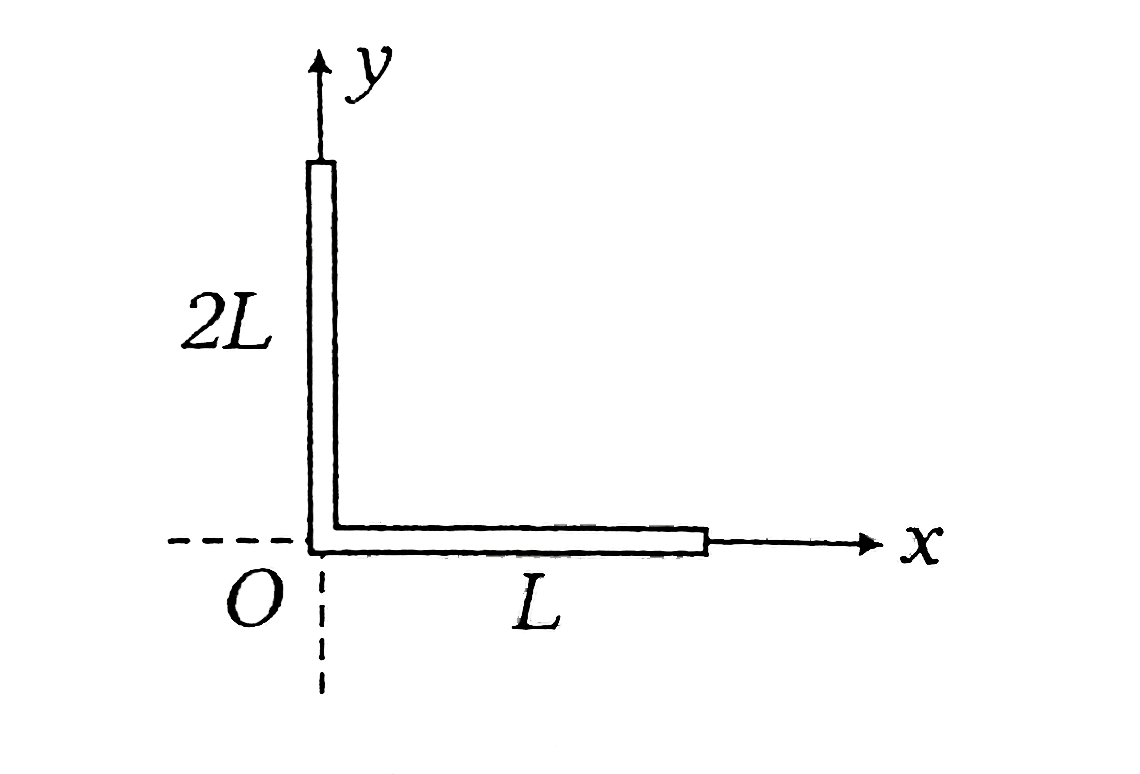Consider a system of two identical masses.One is dropped from a height and another is thrown from ground with speed mu. The acceleration of the center of mass of the system at time t is
g2
g
2g
zero
To find the acceleration of the center of mass of the system consisting of two identical masses, we can follow these steps:
Step 1: Identify the masses and their forces
We have two identical masses, each with mass M. One mass is dropped from a height H and the other is thrown upwards with an initial speed u. The only force acting on both masses is the gravitational force, which acts downward.
Step 2: Write the forces acting on each mass
- For the mass that is dropped (let's call it mass 1), the force acting on it is:
F1=−Mg
(the negative sign indicates that the force is acting downward).
- For the mass that is thrown upwards (let's call it mass 2), the force acting on it is also:
F2=−Mg
(again, the negative sign indicates that the force is acting downward).
Step 3: Calculate the total force acting on the system
The total force Ftotal acting on the system of two masses is the sum of the forces acting on each mass:
Ftotal=F1+F2=−Mg−Mg=−2Mg
Step 4: Calculate the total mass of the system
The total mass Mtotal of the system is:
Mtotal=M+M=2M
Step 5: Calculate the acceleration of the center of mass
The acceleration acm of the center of mass is given by Newton's second law:
acm=FtotalMtotal
Substituting the values we found:
acm=−2Mg2M=−g
Conclusion
The acceleration of the center of mass of the system at time t is:
acm=−g
The negative sign indicates that the acceleration is directed downward.
We have two identical masses, each with mass M. One mass is dropped from a height H and the other is thrown upwards with an initial speed u. The only force acting on both masses is the gravitational force, which acts downward.
- For the mass that is dropped (let's call it mass 1), the force acting on it is:
F1=−Mg
(the negative sign indicates that the force is acting downward).
F2=−Mg
(again, the negative sign indicates that the force is acting downward).
The total force Ftotal acting on the system of two masses is the sum of the forces acting on each mass:
Ftotal=F1+F2=−Mg−Mg=−2Mg
The total mass Mtotal of the system is:
Mtotal=M+M=2M
The acceleration acm of the center of mass is given by Newton's second law:
acm=FtotalMtotal
Substituting the values we found:
acm=−2Mg2M=−g
The acceleration of the center of mass of the system at time t is:
acm=−g
The negative sign indicates that the acceleration is directed downward.
Similar Questions
Consider a system of two identical masses. One is dropped from a height and another is thrown from ground with speed u.The acceleration of centre of mass of the system at time t is
View SolutionA stone is dropped from a height h. simultaneously, another stone is thrown up from the ground which reaches a height 4h. The two stones will cross each other after time:-
View Solution
Knowledge Check
Assertion : A stone and a feather dropped from the same height do not reach the ground at the same time.
Reason : Acceleration due to gravity is dependent on the mass of the object.AIf both assertion and reason are true and reason is the correct explanation of assertion.BIf both assertion and reason are true but reason is not the correct explanation of assertion.CIf assertion is true but reason is false.DIf both assertion and reason are false.
Consider a system of two identical particles. One of the particles is at rest and the other has an acceleration. The centre of mass has an acceleration.
View SolutionIf two particles of masses m1 and m2 are projected vertically upwards with speed v1 and v2, then the acceleration of the centre of mass of the system is
View SolutionA particle (A) is dropped from a height and another particles (B) is thrown into horizontal direction with speed of 5m/s sec from the same height. The correct statement is
View SolutionA ball is dropped from a building of height 45 m. Simultaneously another ball is thrown up with a speed 40 m/s. The relative speed of the balls varies with time as
View SolutionTwo balls of different masses are thrown in air with different velocities. While they are in air acceleration of centre of mass of the system. (neglect air resistance)?
View SolutionFigure shows a composite system of two uniform rods of lengths as indicated. Then the coordinate of the center of mass of the system of rods are

View SolutionFigure shows a composite system of two uniform rods of lengths as indicated. Then the coordinate of the center of mass of the system of rods are

View Solution
